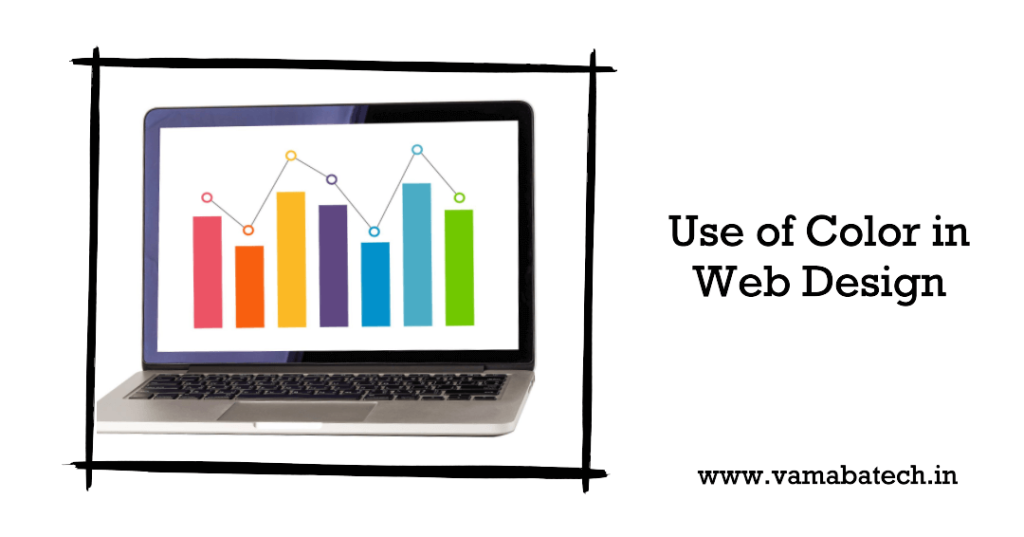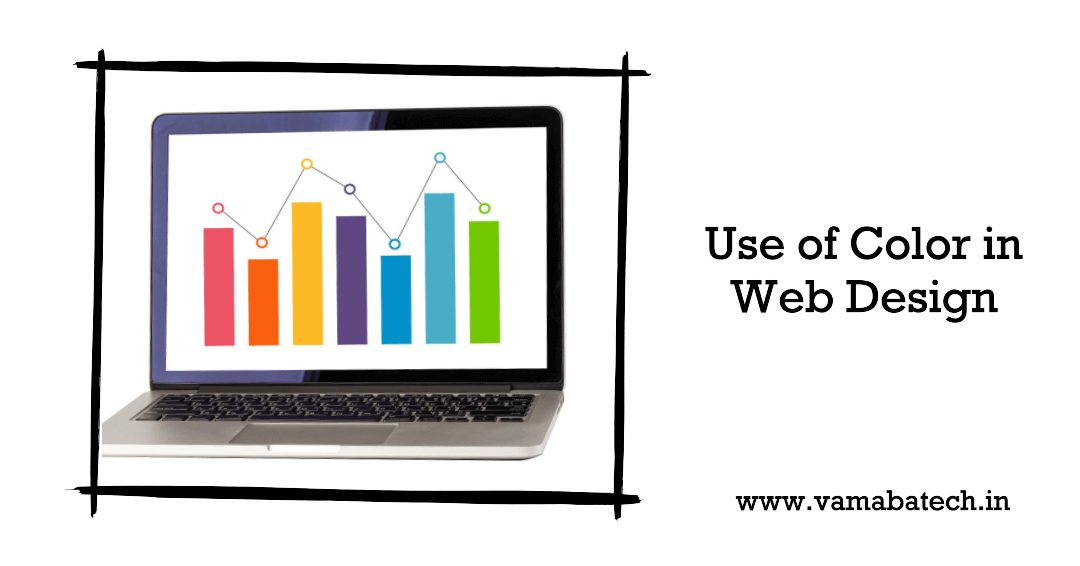Use of Color in Web Design
Importance of the Use of Color in Web Design
The use of color in web design plays a crucial role in creating visually appealing and engaging websites. It serves as a powerful tool to evoke emotions, guide user attention, and establish brand identity. From vibrant palettes that energize a website to subtle hues that create a sense of tranquility, the strategic implementation of color can greatly enhance the user experience.
In today’s digital landscape, where attention spans are short and competition is fierce, it is crucial for websites to effectively engage visitors and drive conversions. One often overlooked aspect of web design that can have a significant impact on user behavior is the strategic use of color. By understanding the psychology of color and implementing it in web design, businesses can create a visually appealing and persuasive online presence that maximizes conversions. In this article, we will explore how the strategic use of color in web design can increase conversions and provide practical tips for leveraging this powerful tool.
How Strategic Use of Color Can Grab Attention
When it comes to web design, the first impression matters. The choice of colors plays a vital role in grabbing the attention of visitors and enticing them to explore further. By utilizing bold and vibrant colors strategically, web designers can create a visually striking website that captivates users from the moment they land on the page.

Creating a Visual Hierarchy
One of the key advantages of color in web design is its ability to establish a visual hierarchy. By assigning different colors to various elements such as headlines, buttons, and important call-to-action (CTA) buttons, designers can guide users’ attention to the most critical parts of the website. This ensures that visitors quickly understand the purpose of the website and take the desired actions, ultimately leading to increased conversions.
Contrasting Colors for Emphasis
Using contrasting colors intelligently can further enhance the impact of a web design. By pairing colors that are opposites on the color wheel, such as black and white or blue and orange, designers can create a strong contrast that grabs attention and highlights important elements. For example, using a vibrant button color against a neutral background can make the button stand out and encourage users to click, thereby increasing conversion rates.
The Psychology of Color in Web Design
Understanding the psychology behind colors is essential for effectively leveraging them in web design. Different colors evoke specific emotions and associations in people, which can influence their behavior and decision-making process. By aligning the color scheme with the desired brand personality and target audience, web designers can create a cohesive and emotionally resonant user experience that drives conversions.
Red: Passion and Urgency
Red is a powerful and attention-grabbing color associated with passion, urgency, and excitement. It can be effectively used to create a sense of urgency and encourage immediate action. For example, incorporating red in CTA buttons can stimulate a sense of urgency, prompting users to make a purchase or sign up for a service quickly.
Blue: Trust and Security
Blue is a color often associated with trust, security, and professionalism. It is widely used by financial institutions and tech companies to instill a sense of confidence in their target audience. Incorporating shades of blue in web design can help create a trustworthy and reliable image, which can positively influence visitors’ decision to convert.
Yellow: Optimism and Clarity
Yellow is a vibrant and energetic color that is often associated with optimism and clarity. It can be used to evoke a cheerful mood, making it ideal for brands that want to create a friendly and approachable image. Including touches of yellow in web design can enhance the overall user experience and encourage visitors to explore further, increasing the chances of conversions.
Green: Growth and Harmony
Green is a color that symbolizes growth, harmony, and nature. It is commonly used by brands that focus on sustainability, health, and well-being. By incorporating shades of green in web design, businesses can convey a sense of balance and environmental consciousness, which can resonate with their target audience and lead to higher conversion rates.
Purple: Creativity and Luxury
Purple is a color often associated with creativity, luxury, and elegance. Brands targeting a high-end or artistic audience can leverage purple in their web design to establish a premium image and attract customers who appreciate luxury and uniqueness.
Practical Tips for Using Color to Increase Conversions
Now that we understand the psychology of colors, let’s explore some practical tips for using color strategically in web design to increase conversions.
- Know Your Target Audience
Before selecting a color scheme for your website, it is crucial to understand your target audience and their preferences. Conduct market research and analyze your competitors’ color choices to identify colors that resonate with your target demographic. By aligning your color scheme with your audience’s preferences, you can create a visually appealing website that engages and converts visitors. - Maintain Consistency with Branding
Consistency is key when it comes to branding. Ensure that the colors used in your web design align with your brand’s overall visual identity. This creates a cohesive and recognizable brand image that instills trust and familiarity in visitors. Consistency also extends to the use of color throughout the website, where specific colors should be consistently associated with certain actions or elements to maintain a clear and intuitive user experience. - Use Color to Guide the User Attention
As mentioned earlier, color can be used to establish a visual hierarchy and guide users’ attention. By using contrasting colors for important elements and strategically placing vibrant colors, such as in CTAs, designers can ensure that visitors notice and engage with the most critical parts of the website. This enhances the chances of conversions by directing users toward the desired actions. - Test Different Color Combinations
Color perception can vary among individuals, and what works for one audience may not work for another. Therefore, it is essential to test different color combinations and gather data on user behavior and conversion rates. A/B testing can help identify the most effective color schemes and optimize web design for maximum conversions. - Consider Cultural Associations
Colors can have different cultural associations, and it is important to consider these when designing websites for international audiences. A color that conveys positive emotions in one culture may have a different meaning in another. Take cultural diversity into account and adapt your color choices accordingly to avoid any unintentional negative associations or misunderstandings.
Frequently Asked Questions (FAQs) for Use of Color in Web Design
1.How does color impact user behavior in web design?
Color has a significant impact on user behavior in web design. Different colors evoke specific emotions and associations, which can influence visitors’ decision-making process and engagement with the website. By strategically using colors, web designers can create a visually appealing and emotionally resonant user experience that maximizes conversions.
2.Can color alone guarantee conversions on a website?
While color is a powerful tool in web design, it is not the sole factor that guarantees conversions. It should be used in conjunction with other elements such as intuitive navigation, persuasive copywriting, and clear CTAs. A well-designed website that incorporates color strategically can significantly increase conversion rates, but it is essential to optimize all aspects of the user experience for optimal results.
3.How can I choose the right color scheme for my website?
Choosing the right color scheme for your website depends on various factors, including your brand’s personality, target audience, and industry. Conduct thorough research, analyze competitors’ color choices, and consider the emotions and associations different colors evoke. It is also important to maintain consistency with your brand’s overall visual identity to create a cohesive and recognizable online presence.
4.Are there any universal color choices for increasing conversions?
While there are no universal color choices that guarantee conversions, certain colors tend to have broad associations that can positively impact conversions. For example, using contrasting colors for important elements and incorporating colors like red to create a sense of urgency can be effective. However, it is essential to consider your specific audience and industry to determine the most effective color choices for your website.
5.Can I use multiple colors in my web design?
Yes, using multiple colors in your web design is common and often encouraged. However, it is important to use them strategically and maintain visual harmony. Establish a primary color scheme and select secondary colors that complement and enhance the overall design. Consistency and balance are key to creating an aesthetically pleasing website that engages visitors and increases conversions.
6.Should I consider mobile devices when choosing colors for my website?
Absolutely! With the increasing use of mobile devices, it is crucial to consider color choices for mobile optimization. Ensure that the colors you select are visually appealing and easily readable on smaller screens. Test your color scheme across different devices and screen sizes to guarantee a seamless user experience and maximum conversions.
Conclusion
The strategic use of color in web design can have a significant impact on user behavior and conversions. By understanding the psychology of color and aligning it with your brand’s identity and target audience, you can create a visually appealing and persuasive online presence. Remember to maintain consistency, use color to guide user attention, and test different color combinations to optimize your website for maximum conversions. Embrace the power of color and watch as your website engages visitors and drives increased conversions.







